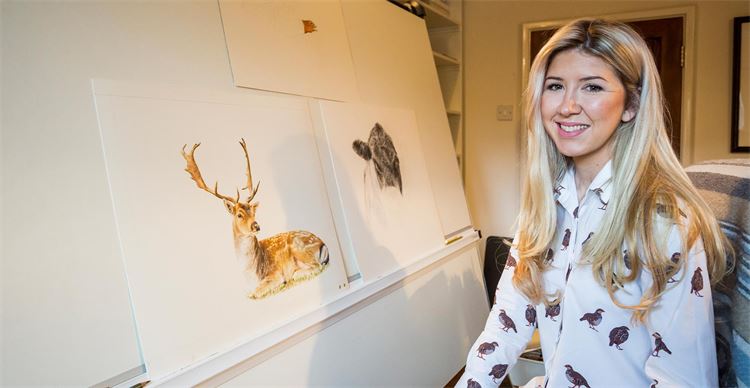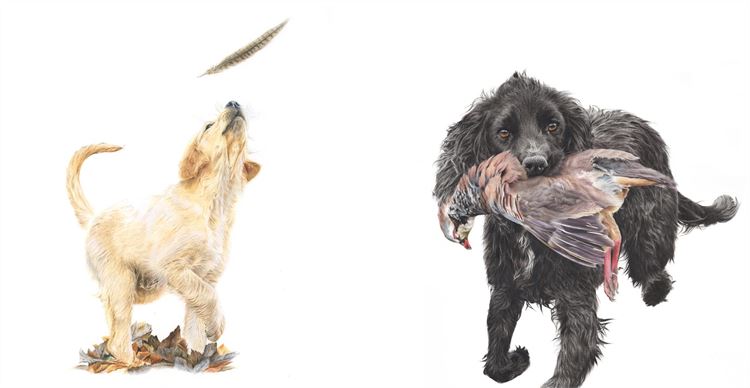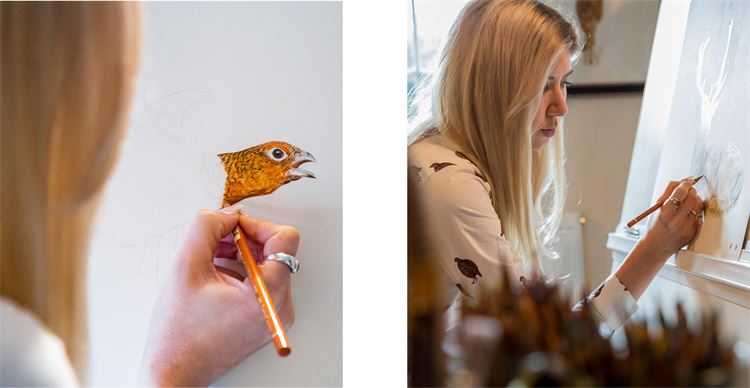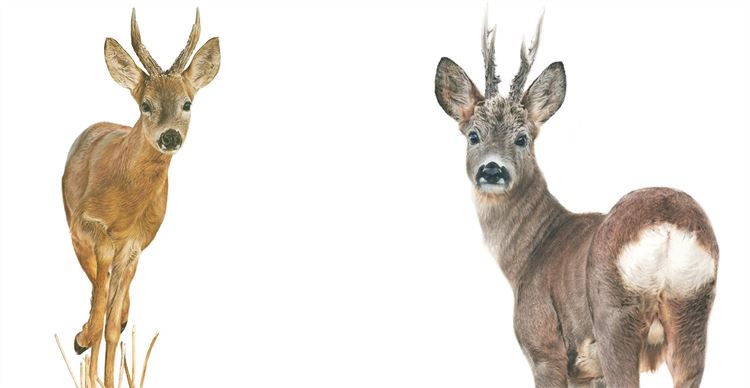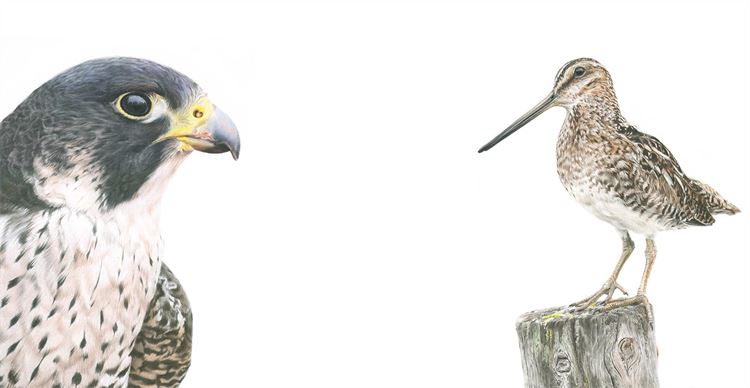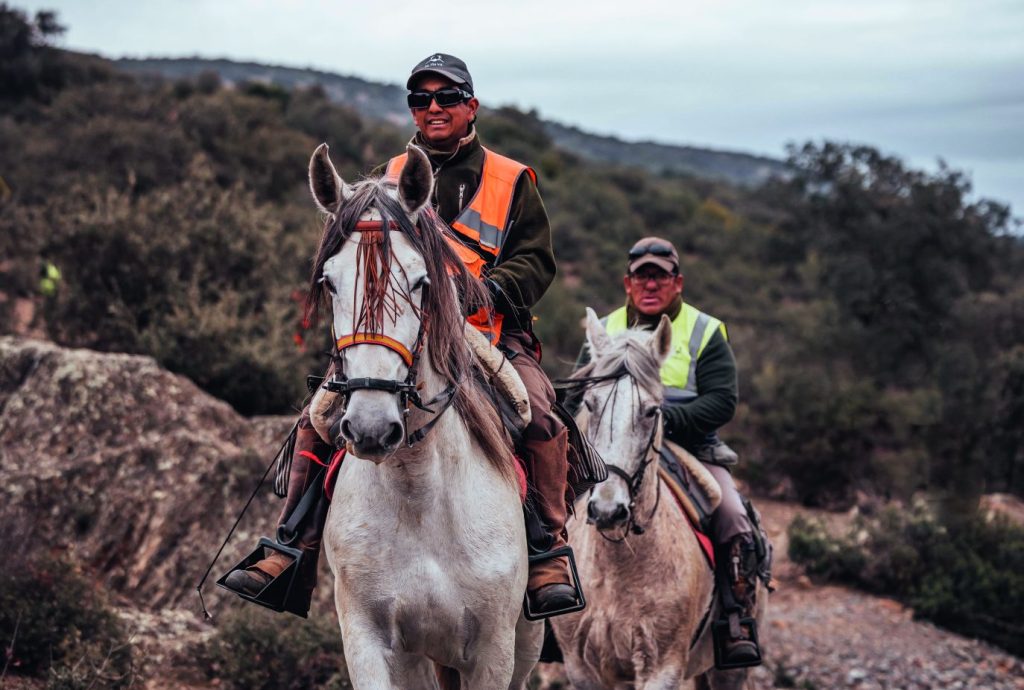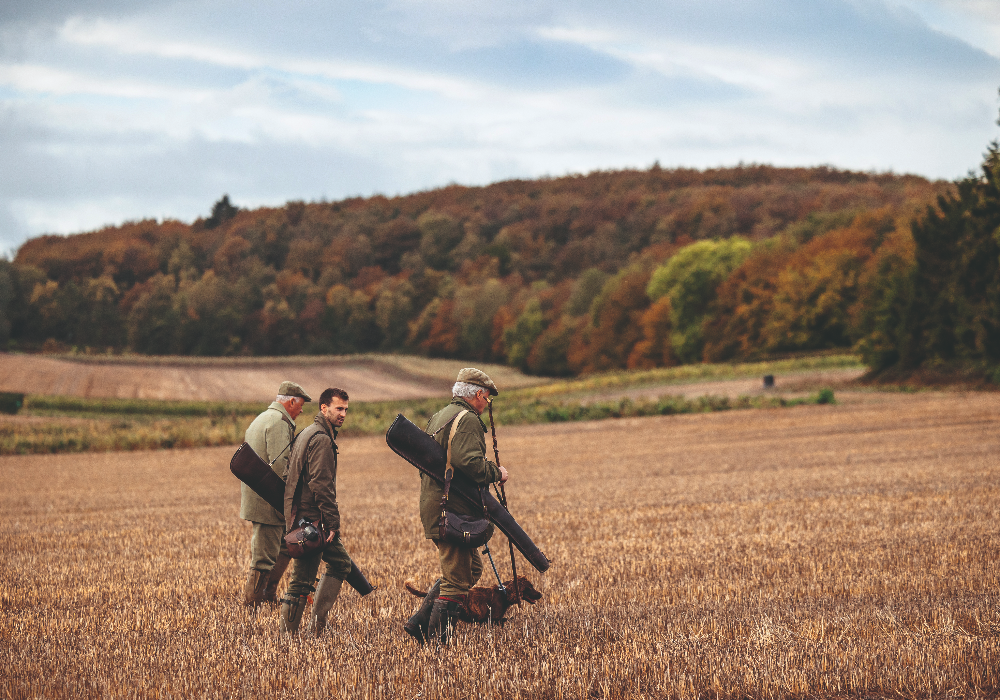Jessica Lennox
Using a medium largely unrecognised by many artists today, the young and talented Jessica Lennox produces drawings that blur the boundaries between art and photographs.
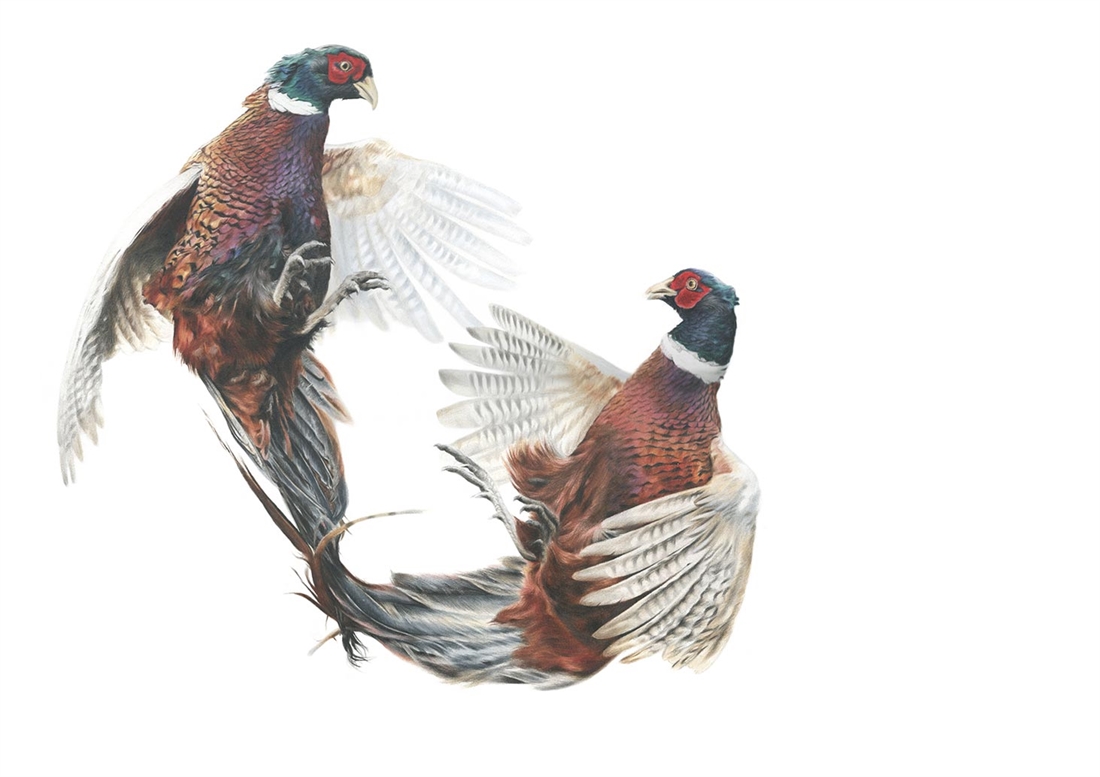
It would be interesting to know how many loyal Fieldsports readers realised that the handsome roebuck gracing the cover of the February/March 2018 issue was in fact a pencil drawing. When we quizzed people on the subject at a subsequent show, it was amazing how many visitors had to take a second glance – some even asked their other half for their close-up glasses – and still they didn’t believe it was art. This reaction is everything that the immensely talented wildlife and canine artist Jessica Lennox aims to achieve with her work – whether it is a study of a roe deer, a chaffinch or a cocker spaniel.
Jessica’s work is striking, clean and, ultimately, a like-for-like representation of the real thing – from the individual barbules of a pheasant tail feather to the wet fur of an otter. But not only is Jessica’s work ultra-accurate, she somehow manages to instil the character of the individual dog, bird or mammal onto the paper.
It will come as no surprise that she is an out and out nature lover. “Having a career linked with wildlife was something I always dreamed of as a child – I even wanted to be a zookeeper,” she jokes. “Every Sunday my grandad and I would walk around Cannock Chase near where we lived. We would watch songbirds, butterflies and deer, and he taught me facts and tested me about the different things we saw as we went. Then, when we got home I would go and draw the different species for hours and hours.”
Throughout her teenage years, Jessica’s love for drawing continued to develop, and an artistic career beckoned. An art foundation course and a degree in Print Textiles followed, before she secured work on a freelance basis. But the career she had signed up to was not what she had envisioned.
“At university, we were taught how to draw subjects accurately, turn them into patterns and apply them to different textiles – think furniture fabrics, wallpaper, fashionable clothing etc.,” she says. “It was great, and I was able to spend so much of my time drawing which developed my skills as an artist immeasurably. “I loved all of the initial stages of designing patterns for textiles, such as creating mood boards, initial sketches, and then working towards a final design. But what I found frustrating was taking something I had spent so long perfecting, and then turning it into a pattern that didn’t do it justice.”
After a year of working in the print textile industry, Jessica decided that she needed a change and took up a job as a waitress. Her evenings, however, were spent at the drawing board producing canine portraits on a commission basis. “People would send me images of their dogs or I would meet them and take my own photos. Then, after work I would draw until the silly hours of the night,” she explains. “I loved it, and after a year I managed to build up enough work that I was able to pack in the day job.
“I continued to focus on drawing dogs for a couple of years until I had earned enough money that I could sustain myself financially, before leaving space in my diary to set aside time to work on what is now my real passion – wildlife art.” This was a huge risk for Jessica, though, as unlike the dog portraits that offered a steady, guaranteed income stream, these would be personal studies that she would then have to try and sell.
But her worries were short-lived, and whether it was a kingfisher or brown hare, people loved the drawings and a loyal client base developed at a promising pace. “Since 2015, I have been able to balance my two interests – I love dogs, and I love wildlife, so it is good to have the variation,” she smiles.
But the biggest surprise to Jessica is the shift in the type of followers she has gained – the majority of which are country men and women. “Today I am commissioning more and more drawings of fur and feather quarry species, and my canine portraits have been somewhat taken over by working spaniels and labradors!”
As a girl who has no background in fieldsports, having never picked up a rod, gun or rifle, one would naturally assume that Jessica might have strayed away from these clients to avoid a conflict of interest. Not so. “Whilst I don’t think I could take part myself, game shooting for food is appealing and I totally understand that without the gamekeepers, stalkers and so on, we wouldn’t have the abundance of flora and fauna that many of us enjoy today,” she says. “I try to explain this to many of my friends and family, but some still don’t get it, or even refuse to.”
Jessica graced the country fair scene for the first time at The Game Fair at Ragley Hall in 2016, dressed in fashionable country clothing and ready to market her work to her new audience. From the success of this first show, she has now gone on to exhibit at many more country shows up and down the UK, with the help of her partner Jay who is also a keen wildlife enthusiast.
Whilst she may not be looking at joining a local syndicate or sitting in a high seat anytime soon, it is pleasing to know that Jessica has been warmly welcomed by the fieldsports community, and that she will be producing exceptional drawings of quarry species and gundogs for many years to come.
The artistic process
Firstly, Jessica will create a moodboard of her different ideas and start researching the various animals in finer detail. “I will then see if a couple of regular photographers that I go to have any new images that I can refer to – in return for a print of the final drawing. Then I start sketching the overall design, focusing on the shapes of the limbs, position of the eyes and other features.”
Next she will mount the hot-pressed paper to her drawing board and consider where to position the subject. “This is the most important element to get right. As there is no background, the negative space – that which remains blank – must be used effectively to focus the viewer on the subject, and make the animal or bird stand out,” she admits. For example, the roe deer in ‘Hindsight’ (the image used on the cover of the February/March 2018 issue of Fieldsports) was positioned right of centre to make the viewer feel that they had been spotted by the buck. “By having no background, the artwork can be hung in any room or location. But this does mean that any faults in a drawing will stand out like a sore thumb,” she continues.
The next stage is to start adding the colour, but unlike watercolours, oils or acrylics, colouring pencils must be applied to paper in reverse, starting with the highlights and adding darker tones at the end. To achieve such fine detail requires a lot of practice and patience, building up hundreds of layers of pencil. “It will take roughly two to three weeks to complete a drawing, and once it is finished it will remain mounted on my drawing board for a few days so I can look at it with fresh eyes and add any final touches,” she adds.
Over time, Jessica’s skills have developed considerably. She has managed to capture the soft texture of fur, and she has recently started to experiment with techniques that create movement in her subjects – whether that is the wingbeats of fighting cock pheasants or a springer shaking off after a water retrieve. “I am so happy with these new results, though I found it very hard to purposely draw something out of focus,” she smiles. “I have also started to play around with adding a little more context, such as a fence post for a snipe to perch on. There is certainly much to trial and explore going forward.”
Related Articles
Get the latest news delivered direct to your door
Subscribe to Fieldsports Journal
Elevate your experience in the field with a subscription to Fieldsports Journal, the premium publication for passionate country sports enthusiasts. This bi-monthly journal delivers unparalleled coverage of game shooting, fishing and big game across the UK and beyond.
Each issue offers a stunning collection of in-depth features, expert opinions and world-class photography, all presented in a timeless yet contemporary design.
Save 10% on shop price when you subscribe, with a choice of packages that work for you. Choose from Print & Digital or Digital only with each journal delivered directly to your door or via the app every other month, plus access to past issues with the digital back issue library.






